Liposuction is an excellent procedure that can be life-changing for many people. However, it’s essential to go into the process with the correct expectations, or you may not experience the results you were expecting. In this article, we go over some of the things you should know before getting a liposuction procedure done.
Liposuction for You
Liposuction is an incredibly useful procedure for cosmetic surgery, but there are several things that patients should know before the big day. It’s important to determine whether liposuction is the correct treatment for you, or if another treatment might prove more useful for what you need.
Liposuction, for example, is not meant to be a weight loss surgery; while it is excellent for removing stubborn fat, it is intended to present a slimmer profile, not necessarily to cause weight loss. Generally, liposuction is only meant to remove between one and ten pounds of fat, and the risk of complications rises as more is removed.
This means that, if you’re looking for weight loss surgery, liposuction is likely not the correct choice for you. Options like bariatric surgery are usually much better for those exclusively considering weight loss. However, if you have one or more small areas of fat that aren’t responding to diet and exercise, like areas around the neck, belly, arms, or legs, liposuction may be ideal for you.
Effectiveness of Liposuction
It’s essential to keep in mind that, while the effects of liposuction are usually permanent, they may be lost if you experience weight gain or fluctuations. It’s important to keep your weight stable and your body healthy following a liposuction procedure to preserve the results. If care is not taken to maintain your weight, you may end up gaining the weight back or requiring another procedure.
Requiring another liposuction procedure because the weight has come back is also not ideal. When liposuction is performed on an area of the body, scar tissue forms afterward to help the area heal. As such, any procedure that’s repeatedly done on this same area will become less effective because of this scar tissue, and it may also cause uneven-looking or bumpy skin.
To preserve the effect of your new physique, it’s also essential to give your body several months between liposuction procedures to heal and regenerate. A minimum of six months is usually recommended. These six months are supremely important to the healing process, as they provide the following benefits:
- Allow fat cells that were damaged during the procedure to be reabsorbed by the body, meaning you will continue to see your body change over time
- Give the procedure area time to heal
- Provide time for you to consider your results before deciding on additional work
Does Liposuction Leave Scars?
Liposuction can result in some minimal scarring. During a liposuction procedure, fat is broken up and sucked out of problem areas using a small tube called a cannula. The incisions caused by this are typically very small and difficult to see. However, if the skin heals improperly, the skin is not elastic enough, or if the procedure doesn’t go well, the skin can behave strangely in the procedure area.
This can sometimes result in a “spotted” or “bumpy” appearance of the skin. However, with proper aftercare, an experienced doctor, and good expectations, your risk for these complications is usually minimal.
Treatment for Liposuction Scars
As we mentioned above, liposuction does not typically leave noticeable scars, and most scarring that does occur will fade or disappear on its own as healing occurs. However, if you do experience noticeable scarring from a liposuction procedure, most scar-reduction therapies on the market should be effective in reducing the scars’ appearance. Some examples of these treatments include:
- Over-the-counter or prescription creams or ointments
- Laser treatment to reduce size and pigmentation
- Injections such as steroids to smooth out the look of the scar
- Scar revision surgery
Cellulite and Stretch Marks
While liposuction is excellent for removing stubborn fat deposits, it will not, unfortunately, fix the appearance of cellulite on the body. Cellulite appears when fatty tissue pushes against the connective tissues of the skin, creating a pock-marked effect. While liposuction can help reduce the fat in a celluloid area, it is neither meant to nor guaranteed to eliminate the appearance of cellulite.
In the same way, liposuction cannot remove stretch marks, either. While stretch marks are often caused by fat being deposited in a particular area, removing that fat will not remove the stretch marks. Stretch marks are scars, so they are permanent changes to the skin that result in scar tissue. Products and procedures that are specifically marketed towards scar removal or fading can help with stretch marks.
Pre-Procedure Treatment
Before your liposuction procedure, your doctor will ask you what kinds of medications and supplements you are taking. You may be asked to stop taking certain medications, such as NSAIDs and blood thinners, or to take certain tests.
If you are having a small amount of fat removed with the procedure, you may proceed under localized anesthesia. However, if several areas will be treated, general anesthesia may be used instead. This all depends on your sensitivity to anesthesia, your doctor’s recommendations, and what level of treatment you’ll be receiving.
Liposuction Recovery
While liposuction is a minimally invasive procedure, there is still some recovery involved with it. Usually, after the procedure, you can expect to return to work in just a few days. However, it is still important to allow your skin to heal – this means no strenuous activities for several weeks following the procedure. Your doctor will most likely prescribe you with antibiotics to prevent infection from developing, and pain medicine may also be necessary, as you will experience some soreness.
After your procedure, it is normal to feel swelling, numbness, lumpiness, and pain around the treated area – these will subside. You may also experience tingling as nerves in the procedure area begin to heal. Ice packs or compression garments can be used to great effect to assist in healing and dealing with swelling.

